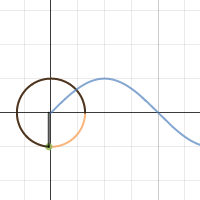
And that makes sense, because if you just hadĪ 1 coefficient here, your period would be 2 pi, 2 pi radians. And you could see the period here, we go up, down, and back Of a sine or cosine function, you take 2 pi and you divide it by whatever this coefficient is. Another way to think about it is you might be familiar with the formula, although I always like you to think about where these formulas come from, that to figure out the period If you at, when x is equal to pi, this will be 1/2 pi, sine of 1/2 pi, is indeed equal to 1. Maximum point at pi over 2, you're going to get there at pi. So one way to think about it is instead of getting to this next And so one way to think about it is your period is now going Over here on your x term that tells you how fast the thing that's being Ways to think about it, is a coefficient right Of just sine of 1/2x? Well, one way to think about it, there's actually two It's not just sine of x, it's sine of 1/2x. How would I graph that? Well, sine of 0 is 0. Just, if this just said y is equal to sine of x, But the first way I like to think about it is what would a regular,

You to pause this video and think about how you So let's think about how we would do this, and like always, I encourage Neighboring extreme point, either a maximum or a minimum point to graph your function.

So this point right over here, it helps you define the midline, the thing that you could imagine your sine or cosineįunction oscillates around, and then you also define a And this is the interactive widget that you would find on Khan Academy. So we're asked to graph y is equal to three times sine of 1/2x minus 2 in the interactive widget.


 0 kommentar(er)
0 kommentar(er)
